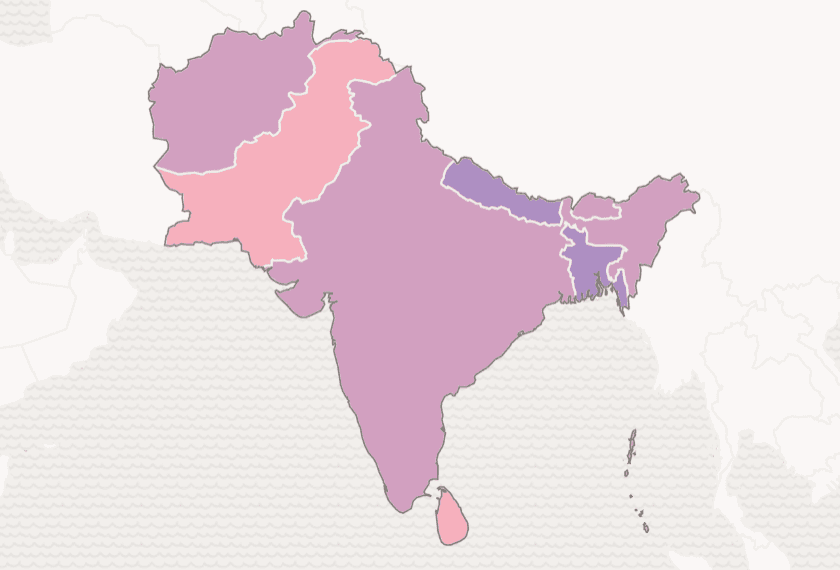
From City to Countryside: Examining differences in exclusive breastfeeding
In early August, the international community celebrated World Breastfeeding Week, an opportunity to reflect on the benefits of breastfeeding and address the gaps in support and prevalence. Breastfeeding gives children a healthy start in life and is the single most effective intervention to prevent under-five deaths. It is also better for the planet and for family finances, as breastmilk is cheaper than formula and the ultimate zero-waste ‘product.’ In a nutshell, with breastfeeding being beneficial for both the mother and the child, it sounds like a no-brainer. Research shows evidence on breastfeeding having cognitive and health benefits for infants.
Breastfeeding is on the rise globally, with a significant increase in exclusive breastfeeding for the first six-months, reaching 48% in 2023 – a 10-percentage point increase over the past decade. This is close to the World Health Assembly target of 50% by 2025. But the world is not on track to achieve the 2030 target of at least 70%. Too many children still miss out on the benefits of breastfeeding, with severe consequences on child mortality, malnutrition, and overall development. On average, more rural children are breastfed than their urban peers (54% vs 45%) and children from poorer households are generally more likely to be breastfed than their richer peers. One of the reasons for this is a major rise in formula breastmilk substitutes, driven by aggressive marketing from the $55 billion formula milk industry, which has led urban and wealthier households to limit or abandon breastfeeding. Our new report exposes how digital marketing of breastmilk substitutes, particularly through social media and influencer marketing, undermines parents’ informed choice.
The Child Atlas brings together UNICEF data on the percentage of infants aged 0 to 5 months of age who were fed exclusively with breastmilk during the previous day. Let’s look at exclusive breastfeeding in three Eastern and Southern African countries, Rwanda, Ethiopia, and Lesotho , which have higher rates of breastfeeding than many other countries. Rwanda has the highest exclusive breastfeeding rate in the world at 81%, while Lesotho and Ethiopia both have 59% rates. Looking at the recent disaggregated data, we find higher rates of exclusive breastfeeding in rural households compared to urban households in all these three countries as well.

The trend graphs above depict an overall fall in exclusive breastfeeding in Rwanda but a significant rise in Zambia and Lesotho. When looking at disaggregated trends by residence, we observe overall progress for both groups in all three countries, but the rate of progress varied by groups and across countries. Ethiopia shows an upward trend in both rural and urban residences till 2016, when urban households had caught up with rural households with a significant increase in breastfeeding. Similarly in Rwanda we see a considerable rise till 2015 among urban children when the gap between the rural and urban breastfeeding was the lowest, but the progress for rural breastfeeding was merely staggering. Lesotho had the highest rate of progress among the three countries.
Gaps between the two groups have reduced significantly in Rwanda and Ethiopia but concerningly it is increasing markedly in Lesotho. Analysing the trends, we observe that in Rwanda progress in breastfeeding among rural households have been very slow while urban households had a higher rate of progress bringing them closer to rural rates. In Ethiopia, the rate of rural breastfeeding was higher but urban households have caught up with them, closing the gap. In Lesotho rural progress rate is higher than urban rate and the gaps are increasing with time (although the last survey suggests gaps are closing, unfortunately by reduced rates in rural areas).
Increasing exclusive breastfeeding rates can reduce inequalities in societies. The change in exclusive breastfeeding needs to be analysed together with disaggregated data and the trajectory of sub- groups. Sure, there has been commendable relative achievements as the three countries are doing better than others but there is still work that needs to be done to change the magnitude and course of exclusive breastfeeding.
Related stories:
Related stories

How a Soap Opera Helped to Reduce Child Marriage
Child protection (CP)
Child protection (CP)
2025-12-09

Does Insurance Benefit Child Health? Lessons from 38 Countries
Health (HL)
2025-11-19